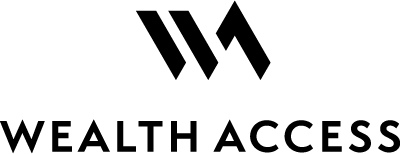This unique partnership combines the industry’s largest independent personal financial management...
Winning Clients Through Reporting
INTERVIEW: Wealth Access On The Key To Winning Clients Through Reporting by Harriet Davies Editor – Family Wealth Report 14 June 2013
Reporting is all about giving clients clarity and control, David Benskin, founder and chief executive of Wealth Access, tells Family Wealth Report.
The ex-Merrill Lynch banker who branched out to start his Tennessee-based wealth management technology firm says: “We think that less is more and actually, through our platform, we have a very simple, clean dashboard where people can see exactly what their bottom line is, how it’s trending and if they’re diversified, and it’s all in plain English.”
Indeed, in an age when we all suffer from information overload, relevancy and simplicity have become paramount in reporting. For ultra high net worth clients, it’s also about pulling together all their complex holdings in one place. The software covers both sides of the balance sheet and reports on alternatives such as art and wine collections, professional sports franchises, real estate, family partnerships, hedge fund interests, direct private equity exposure and angel investments in startup companies.
For Benskin, the “aha” moment came four years ago, at 7pm pouring over a spreadsheet of client data in preparation for a meeting. He was hit with the entrepreneur’s realization: There has to be a better way to do this. He has since set out to convince everyone else that’s the case.
His company has grown quickly. By February 2011, he had met the right technology team and launched Wealth Access; it had a functional prototype in place in December and aggregated more than $10 million in the first month while still in beta.
“Where we are today we’re reporting several billion dollars of assets, we have close to 300 users, the average user is roughly around $8 million in terms of net worth, we have families of upwards $300 million that are using the platform.” What’s more, so far this year it has added about a quarter of a billion dollars each month in assets being reported.
“A lot of our growth has come from the relationships we have and we’re just starting to get the word out,” says Benskin. “In addition we have a big release coming out in about three months which is our version 2.0…and so our objective really is to get to where we have about 5,000 users on the platform over the next few years.”
How it works
Families can go directly and purchase Wealth Access’ software, and then give permission to various advisors. Those advisors are given their own login information and are only allowed to see the segments of data that their client gives them access to – as a key part of Wealth Access’ value proposition is that it gives the investor ownership and control of his or her information. In the world of complex finances, this is akin to piece of mind.
The firm also offers a platform where an advisor can buy the technology on a “deeply discounted” basis and offer it to multiple clients, in a white labeled form if they wish.
Benskin says this has been a revenue generator for those advisors: “The advisor that purchases the software for their families, over 98 per cent of the families that sign up share everything with that specific advisor, and over 75 per cent of [those] advisors have actually uncovered additional assets.”
Reporting has certainly become more of a high-profile issue for advisors. According to a study from Capgemini last year, advisors rank reporting as one of their key enablers while clients view it as one of the top factors when choosing a wealth firm. Advisors are demanding better tools as they see it directly relates to keeping and attracting clients, while for clients transparency fosters trust and clarity makes them feel in control and secure about what they own.
And reporting is linked with a wider investment in technology as firms seek to connect with tech-savvy high net worth clients. While it’s important not to generalize about technology being the preserve of the younger generation, Benskin says what he has found is that younger generations – of inherited wealth – often have the most complex balance sheets, meaning that reporting tools become even more important in this context.
The final tenet of the offering is that the control and ease it allows encourages communication. For example, Benskin says the firm’s $25 million+ users work with an average of five advisors, creating a logistical nightmare. Added to this, he says the trend of HNW clients not wanting to “put all their eggs in one basket since” the financial crisis has actually increased risk in some ways – by creating redundancy and overlap.
Continual development
As with any tech offering, Wealth Access is a work in progress. “Our users’ feedback is important. I think…given my background of working directly with clients I truly have an understanding of that,” says Benskin, who ran a group advising 50 high net worth families in his later years at Merrill.
Some of the projects the firm is developing include a native mobile app to improve the user experience on smartphones. “Our navigation for smartphones is going to be released in the fourth quarter of this year and all the graphics from the very beginning were designed to work really well with a tablet,” says Benskin, who believes the world is “trending strongly” towards mobile.
Meanwhile, reporting in other currencies is also on the cards (at the moment data can be exported and converted from US dollars). The firm will also be continually looking at the assets it reports on and the simplicity of the experience for the user, says Benskin. Then of course there’s the latest version due out in around three months’ time.
Competition and growth
In the difficult business environment of the last few years, wealth managers have turned to technology and operations as a way not only of saving costs but to generate revenue. More broadly, the tech sector has seen a massive revival in interest due to the headline success of a number of firms in that sector and the communications revolution that has taken place in recent years.
Benskin says a lot of private capital is going into investment in the tech sector – with “over $100 million of private money invested in technology companies recently” – and large institutions are also spending their money.
“So if you look on the big institution side, Morgan Stanley earlier this year announced they were going to invest another half a billion dollars in their technology, Merrill Lynch in the fourth quarter of last year announced another large investment in technology and has been rolling out various new releases to their platform,” he says.
This means immense opportunity for firms like Wealth Access, but also guarantees hot competition in this space. Ranking among the firm’s competitors are companies like Advent, Fortigent, while on the financial advisor side players like Personal Capital and Wealthfront have developed reporting platforms linked to an online advice offering.
But Benskin is confident: “We’re entirely private and we’re not associated with an institution, so I really do think we’re a first-mover and we’re nimble, we’re constantly gathering information from our existing users and advisors and finding ways that we can innovate.”
He also cites the technology’s reporting scope, the fact that the firm does not seek to use the clients’ data to sell them anything and its pricing model as competitive points.
While further down the road, Wealth Access might consider expanding its product range, for the time being it is looking at achieving greater market penetration and developing its current offering.
“We are focused primarily in three markets,” he says. “We work with family offices, we work with RIAs that have a high net worth business, or private banks, so…those three groups that serve the HNW, UHNW, multi-gen wealth, in terms of our growth, we’re primarily focused on that.”
A report from Advent that came out this week, which aggregated a number of other studies, said that increasing demands from UHNW clients had underscored the value of technology in helping firms deliver top-notch service.
“Clients expect to be given a holistic view of their assets. They want reports across all banks, custodians and asset classes. Having a portfolio management system that consolidates all of a client’s holdings automatically is a precious asset for wealth managers in this situation, saving time and reducing errors,” the report said.
Benskin made the point himself, saying: “It’s becoming a necessity for the advisors…advisors either bury their heads in the sand and ignore that, or they decide to invest in that.”
However, he does see one group of companies as a potential client group: hedge funds, but he stresses that it’s early days.
“We have a lot of relationships with hedge funds and how do they do it? How do they share information with investors? Right now they send a monthly or quarterly pdf file that says here’s your net asset value…well now investors want to see a little bit more, so how can we improve reporting of hedge funds and private equity to their limited partners and then combine that with an overall view for those LP’s is something we’re working with,” he says.


